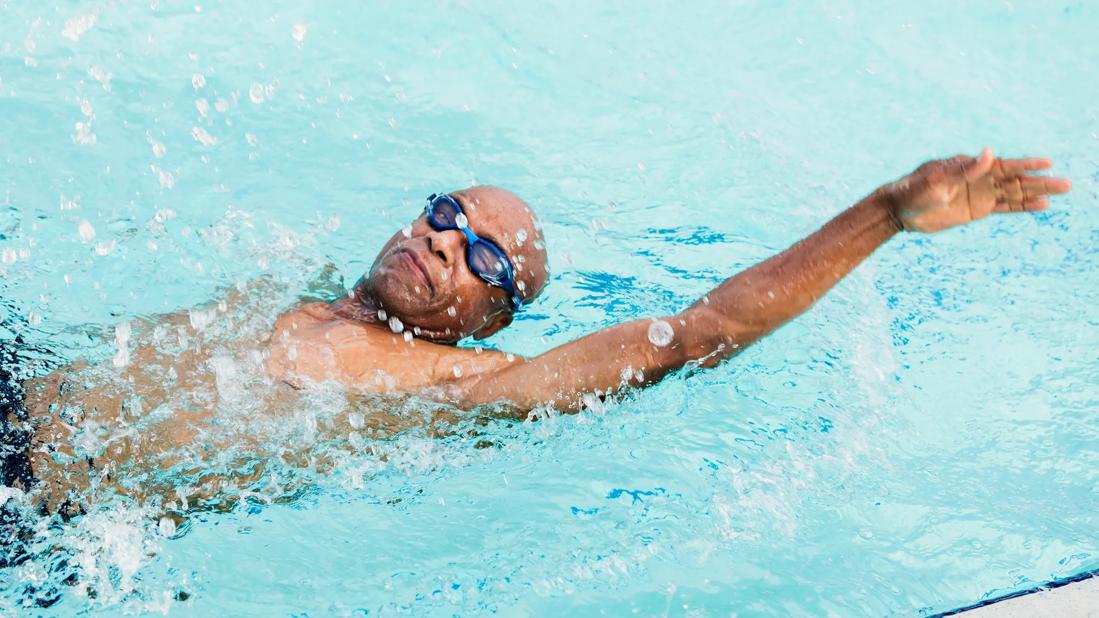Slow-Twitch Muscle Fibers: What They Are and How To Work Them
These fibers are your friend for aerobic and endurance exercises

You might not think you’re working your muscles when walking to your car, pushing a grocery cart or sweeping the floor. But every time you do one of these low-intensity activities, you engage your slow-twitch muscle fibers.
These muscle cells, also called type I muscle fibers, keep you going during everyday movements and longer workout routines. Exercise physiologist Katie Lawton, MEd, explains slow-twitch muscle fibers and how to keep them healthy and strong.
Do you need slow-twitch muscle fibers?
Absolutely! “Your slow-twitch fibers are necessary for everyday life and endurance,” says Lawton. “Every time you sit, stand, walk or do moderate-intensity exercise, you use your slow-twitch fibers.”
But if you follow fitness experts and trends, you’ve probably heard more about fast-twitch muscle fibers, also known as type II muscle fibers. Your fast-twitch muscle fibers are muscle cells that produce a lot of power very quickly, allowing you to do explosive movements and intense weight training.
As the name suggests, slow-twitch muscle fibers utilize energy more slowly than fast-twitch muscle fibers. But that doesn’t mean they’re second best. In fact, slow-twitch muscles are actually used first and more often in everyday activities.
Plus, they last much longer. “Fast-twitch muscles fatigue after a few seconds or a couple of minutes,” says Lawton. “Slow-twitch muscle fibers, on the other hand, keep going for extended periods.”
Why do slow-twitch fibers punch the clock for more hours than their fast-twitch counterparts? The main reason is fuel.
“Your slow-twitch muscle fibers are aerobic, meaning they use oxygen for fuel,” she continues. “You replenish this oxygen as you breathe so your slow-twitch muscles can keep going. Fast-twitch fibers use glucose and lactic acid, which take longer to regenerate as fuel.”
How many slow-twitch muscle fibers do you have?
You’re born with a mix of fast-twitch and slow-twitch muscle fibers, says Lawton. But everyone has a different ratio of these fibers. The numbers depend on:
- Age: In general, older people have more slow-twitch fibers. “As we age, many people lose muscle mass through sarcopenia,” says Lawton. “Sarcopenia affects your fast-twitch muscle fibers more, so your slow-to-fast-twitch ratio increases. However, you can avoid or slow this process by doing high-intensity exercises and strength training.”
- Exercise habits: A long-distance runner will have more slow-twitch fibers than a sprinter. Doing a mix of longer, moderate-intensity and short, high-intensity exercise will help you keep a healthy amount of both types of muscle fibers.
- Genetics: Like eye color, hair color and many other traits, your genes play a role in your muscle composition. “But how you train and the stimulus you place on muscles can also have an impact on muscle fibers,” notes Lawton.
How to build type I muscle fibers
Training and building slow-twitch muscle fibers requires moderate-intensity exercise. If your intensity gets too high, like with high-intensity interval training or weightlifting to your maximum, your fast-twitch fibers will take over.
“Slow-twitch muscle fiber exercises are aerobic exercises,” says Lawton. “These activities are great for your cardiovascular health. Slow-twitch fiber exercises also burn fat, which can help with weight loss.”
Slow-twitch muscle exercise examples include:
Walking
This tried-and-true exercise is widely recommended for a reason. “Walking has mental health benefits and improves cardiovascular and metabolic health,” says Lawton. “Every time you walk, you work your slow-twitch muscle fibers.”
Plus, you don’t need special equipment and it’s great exercise for beginners and seasoned athletes alike.
Swimming
Got sore joints? Swimming will work your slow-twitch muscle fibers and has practically zero impact, thanks to the buoyancy of water.
“Water exercises offer moderate resistance and engage your slow-twitch fibers,” says Lawton. “Swimming is often a good choice for people with reduced mobility, arthritis, fibromyalgia or obesity. But even hard-core athletes can get a great full-body workout with swimming.”
Jogging
Like to run longer distances? You’re using your slow-twitch muscle fibers when you do. “Fast-twitch fibers are necessary for sprinting, but your slow-twitch fibers carry you through a longer, slower run,” explains Lawton.
Primal movement workouts
A primal movement workout involves movements we use every day, like bending, twisting and lunging. It’s a moderate-intensity exercise and targets muscle groups you need to stay mobile and active, which makes it a good way to target slow-twitch muscle fibers.
Don’t ignore your fast-twitch muscle fibers
It’s easy to assume that you don’t need fast-twitch muscle fibers unless you’re a powerlifter, but that’s not the case.
“Everyone needs fast-twitch muscle fibers because they improve reaction time,” clarifies Lawton. “If you’ve ever tripped and caught yourself before you fell, you can thank your fast-twitch fibers. Many older adults are prone to falls due to declining amounts of fast-twitch fibers.”
Finding the right routine
Creating a workout routine that works all of your muscle fibers can be overwhelming. If you’re not sure where to start, consider getting help from a pro.
“Many people are surprised to find out they’re only working one muscle fiber type,” says Lawton. “That’s why it’s helpful to consult a personal trainer or exercise specialist to evaluate your routine. They can help you find activities that are best for your fitness goals and personal preferences.”